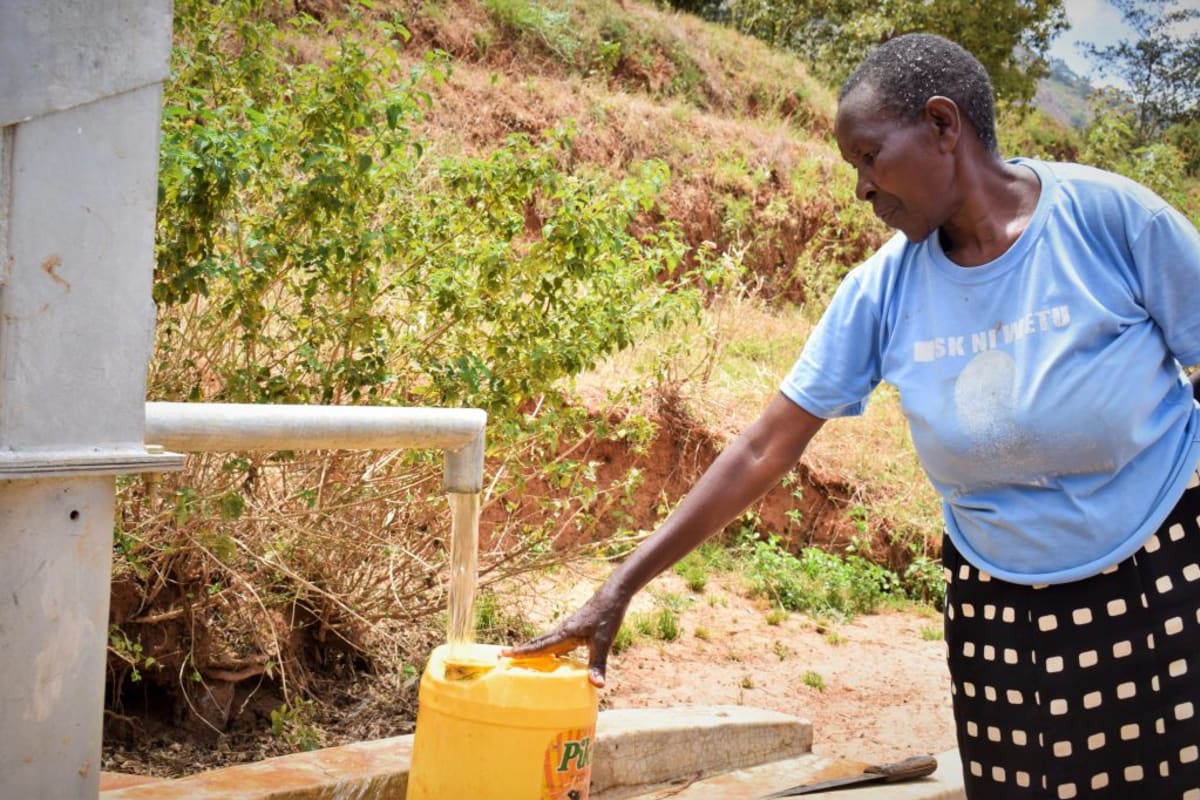The Kyumbe Women's Group was formed in 2012 and later registered with the government in 2014. It has a current membership of 26 women. It is found in Kyumbe Village of Machakos County, Kenya. Their greater area has a total population of 2,176 people.
(Editor's Note: While this many people may have access on any given day, realistically a single water source can only support a population of 350-500 people. This community is a great candidate for a second project in the future so adequate clean water is available. To learn more, click here.)
The main objective for the group is economic stability through table banking, and the group also has tents and kitchenware for lending out during social events. These endeavors help all the women have enough money to send their children to school. The average age of group members is 50 years and the mean household membership is five members. A few of these members are widowed.
A majority of the women depend on casual labor and farming for their livelihoods, earning an average monthly income of 3,000 shillings.
Members of Kyumbe Women's Group heard about us from members of Mbuuni Self-Help Group. They then approached our field officer, Benson Kituku, with a request for support. Kyumbe was an obvious choice after we witnessed their water and sanitation challenges.
Water
These women and their neighbors fetch water at springs that bubble up from the ground. These springs pool enough to allow a small cup to be dunked continuously to fill a 20-liter jerrycan. When these springs dry up for part of the year, community members must walk up to five kilometers to get water at a county government borehole.
Though the water fetched from unprotected springs is contaminated, it is closer to home and much more convenient. Mrs. Sapheth Kitema said, "We fetch water from an unprotected river source which is shared with livestock and drink it without treating. We also use it for other household chores." After drinking this water, people suffer from waterborne diseases like typhoid and bilharzia.
Sanitation
All members of Kyumbe Women's Group have a pit latrine, with quality depending on each family's economic status. Most were dilapidated and missing doors; instead, a curtain was hung in the opening. Just a couple of women had a container with water for washing hands after using the latrine. However, they didn't have soap or ash for scrubbing.
Less than half have other helpful sanitation tools like dish racks and clotheslines. Around half of the families just throw their trash in a pile behind their homestead. Only six families had purchased a garbage bin.
Here's what we're going to do about it:
Training
To address gaps in hygiene and sanitation practices in Kyumbe Community, training will be offered to self-help group members on three consecutive days. The members will learn about useful practices and tools to improve health, and then will be able to share those with their families and neighbors. Water transport, storage, and treatment methods will be taught, and hand-washing will be a focus. Group members will learn how to make their own hand-washing stations with everyday materials. To motivate participants, we must show the links between these activities and their people’s health.
Sand Dam
The group proposed a site for a sand dam, which was soon after approved by our technical team because there is firm bedrock and wide banks. This particular sand dam is projected to be 42.4 meters long and 5.5 meters high.
This sand dam will be one of many construction projects to come in the next few years. We will spend a total of five years unified with this community to address the water shortage. More sand dams will be built to transform the environment. As the sand dams mature and build up more sand, the water tables will rise. Along with these sand dams, hand-dug wells will be installed to give locals a good, safe way to access that water.
As the sand dam construction begins, community members will start excavating their first adjacent hand-dug well (click here to see that well project).
This project is a part of our shared program with Africa Sand Dam Foundation. Our team is pleased to provide the reports for this project (formatted and edited for readability) thanks to the hard work of our friends in Kenya.



 Rehabilitation Project
Rehabilitation Project






























